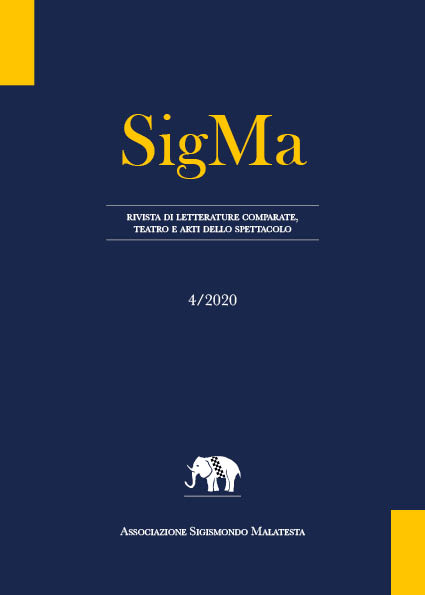“Dare la ventura”: scene di chiromanzia in età moderna tra editoria popolare e spettacolo di piazza
Abstract
Le zingare in età moderna popolano le piazze cittadine come le pagine delle commedie, divenendo personaggio simbolico e allegorico grazie al loro fascino magico ed esotico.
Il contributo si propone di ricostruire la fortuna drammaturgica della figura della zingara attraverso uno spoglio di scene di chiromanzia. La lettura della mano è oggetto di una vasta letteratura. Si può rintracciare infatti in trattati su vagabondi e ciarlatani, bandi di espulsione, opere degli accademici e canovacci dei Comici dell’Arte.
Downloads
SigMa pubblica in internet, ad accesso aperto, con licenza:
|
|
CCPL Creative Commons Attribuzione |
L'autore conserva il copyright sul suo contributo, consentendo tuttavia a chiunque "di riprodurre, distribuire, comunicare al pubblico, esporre in pubblico, rappresentare, eseguire e recitare l'opera", purché siano correttamente citati l'autore e il titolo della rivista. L’autore, al momento della proposta di pubblicazione, è inoltre tenuto a dichiarare che il contenuto e l’organizzazione dell’opera è originale e non compromette in alcun modo i diritti di terzi, né gli obblighi connessi alla salvaguardia di diritti morali ed economici di altri autori o di altri aventi diritto, sia per testi, immagini, foto, tabelle, sia per altre parti di cui il contributo può essere composto. L’autore dichiara altresì di essere a conoscenza delle sanzioni previste dal codice penale e dalle leggi speciali per l’ipotesi di falsità in atti ed uso di atti falsi, e che pertanto Reti Medievali è esente da qualsiasi responsabilità di qualsivoglia natura, civile, amministrativa o penale, e sarà dall'autore tenuta indenne da qualsiasi richiesta o rivendicazione da parte di terzi.

